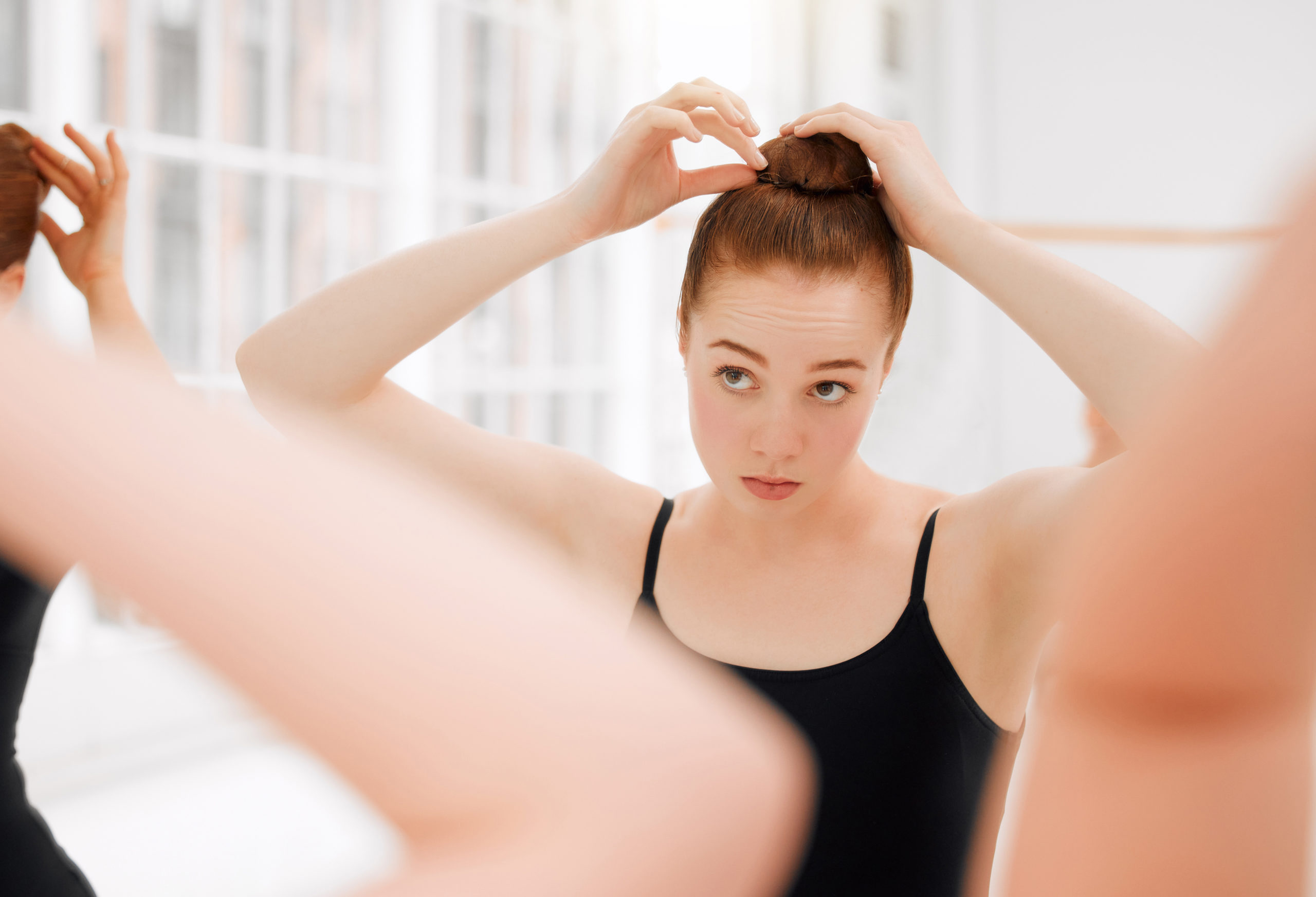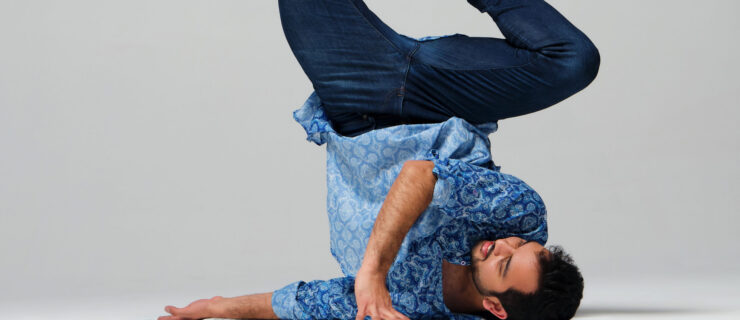Is Your Hairstyle Causing Hair Loss?
It’s easy to go into autopilot when slicking your hair back into a bun or braids. After all, it’s as much a part of a dancer’s routine as stretching or taping up your toes. But repeatedly pulling your hair into tight styles can lead to a type of hair loss called traction alopecia. “This is a kind of alopecia caused by damage to the follicles from consistent pulling on the hair,” says Gretchen Friese, a certified BosleyMD trichologist. While the condition can take years to develop, there are steps you can take to minimize the risk of causing damage in the first place (and signs to look out for along the way).
Switch Up Your Styling Strategies
“If you can, change your hairstyles as much as possible so you’re not pulling your hair in the same way,” advises Dr. Michele Green, a board-certified dermatologist in New York City with extensive experience in hair loss treatment. “Traction alopecia isn’t just caused by a bun—I’ve seen it with braids or a really tight ponytail—it’s just a lot of strain on the hair, and it’s literally pulling the hair out.” Green also suggests taking your hair down as soon as you’re done with class or a performance, and Friese says to avoid wearing your hair in a tight style overnight, too.
Because this kind of hair loss isn’t caused or exacerbated by styling products, Pascal Gantois, a senior stylist at Rita Hazan Salon in New York City, suggests using plenty of product to fake a sleeker look for class and saving tighter styles for performances. No matter what style you’re trying to achieve, Gantois recommends using a gel and strong-hold hairspray (he likes Milbon Extra Strong Hold Hairspray 10 and Oribe Rock Hard Gel). If you’re a bunhead, Gantois says to keep it low. “Parting the hair and doing a low bun will be less damaging to the scalp and roots than a high bun,” he says, adding that using thicker bobby pins gives a tighter hold.
Avoid relaxers or other chemical treatments as much as possible, which can burn the hair and cause more trauma. Green, whose patients include Broadway actors, notes that wigs and extensions can also be “brutal” on the hair.
Watch for the Signs and Symptoms
Friese says you’ll know your daily hairstyle is too tight if it hurts at the scalp. But the signs that you could be developing traction alopecia are more varied than that and include everything from scalp itchiness and follicular pustules (pimples) to hair breakage. “Sometimes you see irritation around the area, or you’ll see the hairline changing,” says Green of what to look out for. “Some people see redness, the part widening or hair breaking off,” she continues. “When it’s really far gone, you see hair loss and skin that is sort of shiny because the follicles there are dead.”
Think You’re Already Experiencing Traction Alopecia?
While changing your hairstyle is key to preventing and treating traction alopecia, it’s always best to consult with a professional as soon as you notice any of the signs. A dermatologist with experience in hair loss treatments can confirm your diagnosis and, in cases of more severe traction alopecia, prescribe treatments. “The key is not to wait if you think you’re losing hair, because it can be harder to treat,” stresses Green. “It depends on the situation, but if the scalp is really inflamed, you may need an antibiotic to treat infection or you may need to start on some minoxidil to regrow the hair,” she says of common treatment options.
Friese adds that a minoxidil-based treatment, like the BosleyMD Hair Regrowth Treatment, may help to regrow hair, while topical steroids and antifungal shampoos can help with swelling on the scalp. And both Green and Friese note that bloodwork and a tissue biopsy can be helpful for ruling out other causes of hair loss. “It’s really important to find out why it’s happening,” says Green. “Hair loss can also be from poor diet, anemia, thyroid problems, genetics or hormonal problems.”




